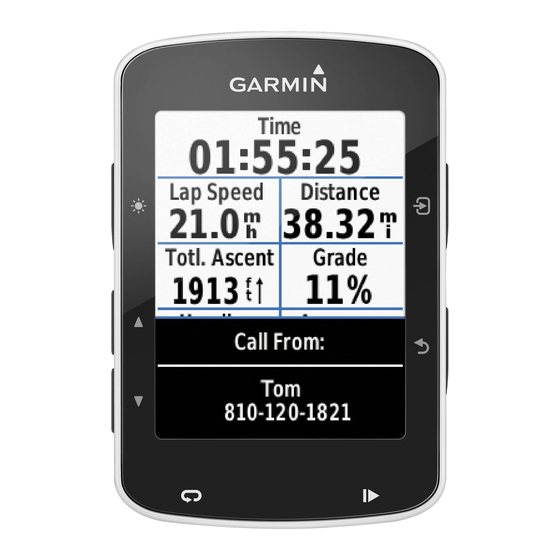- ページ 7
船舶用GPSシステム Garmin GPSMAP 526/526sのPDF テクニカル・リファレンスをオンラインで閲覧またはダウンロードできます。Garmin GPSMAP 526/526s 42 ページ。 Flush mount template
Garmin GPSMAP 526/526s にも: 取付説明書 (12 ページ), リファレンス・マニュアル (2 ページ), 重要な安全情報 (48 ページ), 取扱説明書 (28 ページ), テンプレート (2 ページ)

Building a NMEA 2000 Network
The main communication channel of a NMEA 2000 network is a backbone to which your NMEA 2000 devices connect. Each NMEA 2000
device connects to the backbone with a T-connector. The NMEA 2000 backbone must be connected to power, and terminators must be installed
at both ends for the network to function correctly.
When you design a NMEA 2000 network, start by creating a diagram of the network. When creating the diagram, be as detailed as possible:
•
Include all of the devices you intend to connect to your network
•
Note the approximate location of the backbone and devices on your boat
•
Measure the distances between devices and the backbone, as well as the overall length of the backbone
•
Note the power consumption of each device (Load Equivalency Number)
Intelligent transducer
Female
terminator
Note: This diagram illustrates the NMEA 2000 data connections to each device or sensor. Some devices or sensors can be powered by the NMEA
2000 network; others may require a separate power connection. Consult the installation instructions for each device you connect to your NMEA 2000
network to be sure you supply power to the device appropriately.
When building a NMEA 2000 network, you must follow certain rules to make sure your NMEA 2000 network functions correctly. Be sure to
understand the following concepts:
•
Linear backbone construction
•
Power connection and distribution
•
Proper termination
(page
•
Cable length and device limits
Technical Reference for Garmin NMEA 2000 Products
Fuel sensor
Ignition or
in-line switch
+
Battery - 12 Vdc
Backbone extension cable
Sample NMEA 2000 Network
(page
4)
(page
5)
7)
(page
8)
Marine instrument
Fuse
-
Power cable
NMEA 2000 backbone
NMEA 2000 Fundamentals
Chartplotter
Drop cable
T-connector
Male
terminator
